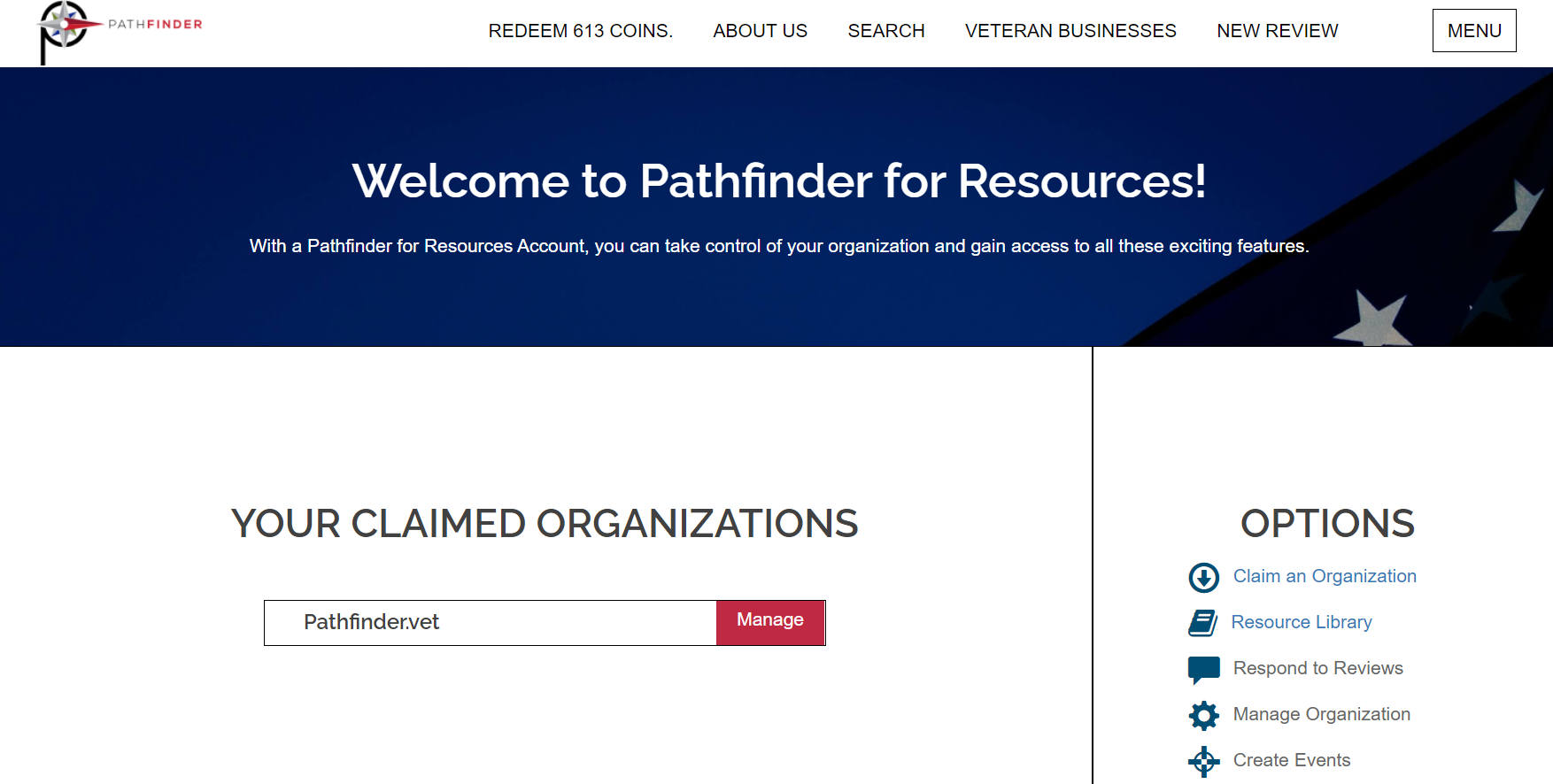

Pathfinder Labs helps nonprofits, community programs, and services to recruit more participants, retain those they support, and raise more funds for constant program improvement. We do this through a system of feedback loops and AI-analysis, allowing them to standardize and visualize their impact on those they serve.
If you are offering free support services, programs, and/or benefits to Military, Veterans, and Milvet Spouses - or emergency services personnel - we want you on the platform.
This includes:
There's a lot of info here! Here's how to get your organization connected to our community quickly:
Our mission is all about improving community well-being and the impact of services through data analysis, and we are grateful to each of the providers and programs for all they contribute every day to the lives of Military, Veterans, their Families, and emergency services personnel (generally referred to on our site as MilVets or the MilVet community). We offer a few different services, each of which builds on the others.

Best For: Creating ongoing dialogue with past and present clients or participants; Demonstrating change and improvement efforts to donors; Recruiting and referrals to services.
What We Do: Every program or provider having one or more interactions or engagements within the MilVet community over the course of them receiving services can have up to two representatives managing engagement at the local level create Pathfinder accounts, then visit their page to initiate a claim.
Once approved, the representative gains access to the Pathfinder Labs Back Office from which they can:
Best For: Visualizing current programs' impact; Determining differences in approaches (eg., virtual vs in-person events) or chapters (ie., what small variations at one office are having an impact the others could then implement); Planning new programs or new locations
What We Do: Over the course of 45-60 days, we work with your team to provide a comprehensive look at your current and - as possible - past programming. This assessment provides a snapshot of program status and effectiveness, and a guideline for creating or growing new initiatives.
Over the course of 45-60 days, our analysts and Community Partner Specialists will:
Best For: Tracking and optimizing impact of program changes over time; Measuring participation over time; Grant application and updating; Donor relations.
What We Do: Conducted over the course of a year, this detailed analysis tracks changes, progress, and continued development and improvement in participants while protecting their identity and information. The reports provide focus on optimizing programs that offer longer-term (eg., service animals, multi-week training or courses, online communities) or recurring (eg., monthly events) engagements.
In addition to the previous products and with no further time requests of your team, our platform and staff will offer:
Available For: 501c3 Nonprofits with under $10M in assets looking for snapshot or progressive impact analysis, in need of partial or full funding through a restricted donation.
What We Do: Our goal is to provide validated, unbiased data analysis for every MilVet 501c3 charitable program at little or no cost to the organization.
To accomplish this goal, Pathfinder Labs is creating financial partnerships with multiple sources to supplement or fund the analysis cycle for 501c3 nonprofits working in the MilVet community. Through a restricted gift agreement and a Donor Fund created in partnership with PVBLIC Foundation, organizations will receive the funding to:
We know a lot of charitable programs are apprehensive of feedback, largely because they worry about the community - or donors - seeing something that reflects a less-than-stellar experience that could potentially deter support. What we (and scores of researchrs) found, however, is the opposite.
Here's just a sample of common concerns, and what we continue to discover:
We don't just use AI in the form of making better recommendations for users to find services, we use it to help you make better programs. Programs and services need to track and report their impact year-round, but most can only afford the expense - in both money and time - to conduct an impact survey once a year. Furthermore, those surveys are usually lengthy, decreasing response rates, and subject to bias.
By the way: for more on bias, probability, and other misc nerdy topics, check out our CEO's Nerd Desk blog. #hashtagVetNerds!
So to get unbiased, year-round data for use in donor engagement, grant-writing, program optimization, and participation assessments, we came up with a cool system using verified, validated technologies and peer-reviewed research and scales. From this, we built algorithms and methods to get visualize detailed information about participant trends, standardized measurements of program impact, and recommendations for efficient operations planning.
For example, some things we've uncovered for past clients include:
We take the privacy of users and the security of data very seriously. Please review our Privacy Policy and Terems of Service, linked at the bottom of each page.
To create the most thorough analysis possible while protecting our users, we offer additional assurances on data storage and security:
*Answer: 42. We said we were nerds...